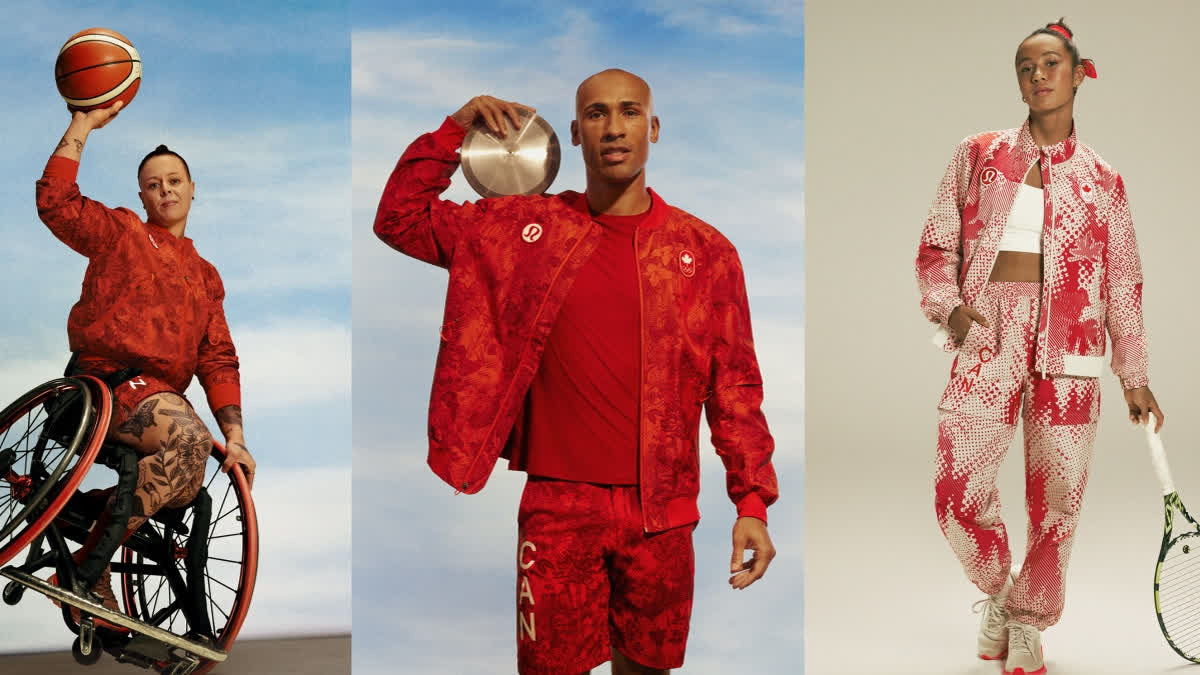Paris (AP): Sure, they call it the City of Light. But Paris is also the City of Fashion, one of the most influential fashion capitals of the world for decades, no, centuries (remember Louis XIV?)
So it's no surprise that fashion designers across the globe are busy getting their national team uniforms ready for their unique spotlight. When it comes to high-end Olympic fashion — be it for festive opening ceremonies, or for competition — all runways lead to Paris.
Stella Jean will be there, styling each of Haiti's dozen or so athletes herself. Jean, an Italian-Haitian designer based in Rome, figures she has exactly two seconds, on opening ceremony night, to make an impression on the world — an impression that may reverberate for years. "For these athletes, it's a victory just to be here," says Jean, whose vivid, colourful design is intended to highlight the cultural vitality of the Caribbean nation.
On the other end of the size (and budget) spectrum is Ralph Lauren, who will outfit hundreds of athletes of the US team at opening and closing ceremonies, for the ninth time. Lauren, who's presenting a casual look of blue jeans and blazers, is of course one of the world's richest designers, along with Giorgio Armani, who has been designing Italy's uniforms since 2012.
Countless other designers have gotten involved — including, this year, more young, "indie" labels eager to make a splash. It's also a chance to emphasize qualities such as sustainability in fashion and adaptability, too, as in designs for the Paralympics.
"Designers and manufacturers now realize this can be a huge platform for them, for many things," says Alison Brown, who co-hosts a podcast on all things Olympics, "Keep the Flame Alive." For example: "Sustainability is a huge buzzword now for this whole Olympics," she says.
And so is style — because, well, Paris.
"You always want to represent your country, and you want to represent the athletes. But it seems like this time, the pressure to do it well has been turned up a notch," Brown says.
Some emerging details on various uniform designs:
Canada: A focus on inclusivity, adaptability
During the design process, the team from Lululemon, outfitting Canada's athletes for the second time, says they listened carefully to the athletes, and how they felt in the clothes. "When you feel your best, you perform your best," says Audrey Reilly, creative director for Team Canada at the athletic apparel company.
She recalls listening to Alison Levine, a Paralympian who uses a wheelchair, and learning the athlete had nothing suitable to train in — so she wore medical scrubs.
"I was shocked that a professional athlete had to do that," Reilly said in an interview. So we said, "Let's investigate." One result was a "seated carpenter pant," part of a collection intended to be inclusive and adaptable. Other features include special closures to facilitate putting on and taking off garments, and pockets at the knees so an athlete like Levine can access her phone when training.
The collection covers all aspects of Team Canada's journey, from travel to the games to opening and medal ceremonies, to training — everything except competition. To combat the expected searing Paris heat, Lululemon, which has a four-game deal with the team, paid special attention to ventilation and wicking.
And for opening ceremonies, designers created what they call a "tapestry of pride." Hand-drawn and engineered into the fabric, it includes 10 animals — nine representing the provinces of Canada and one representing France. "We wanted to evoke all of Canada, coast to coast and north to south," Reilly says.
Haiti: "They know their bodies are a flag"
Stella Jean is used to designing beautiful clothes. But beauty for beauty's sake was not a consideration in her designs for Haiti's team. It was all about the message.
"This will be the first good news coming out of Haiti in at least the last three years," she says, the athletes' appearance a counter-message to news about political turmoil, poverty or natural disasters. "So, I felt the responsibility to say as much as I can about the country."
For that, Jean is collaborating with Haitian artist Philippe Dodard, whose vibrant painting will be incorporated into the ceremonial uniforms — a brightly hued skirt for women and pants for men, paired with traditional items like a chambray shirt. The designs have been constructed from "leftover" fabric — sustainability, yes, but not because it is trendy, says Jean, but because in Haiti it's both a tradition and a necessity.
Jean calls the Haitian athletes "ambassadors."
"These ambassadors will be there, in Paris," she says, "and they all know, even if they are very, very young, how important their presence is — and that it's not just about performance. They know their bodies are a flag."
USA: "Nothing says America like blue jeans"
For the last summer games in steamy Tokyo, Ralph Lauren outfitted athletes with something cool — literally — a technology that directed heat away through a fan device at the back of the neck.
